- Administrator
- Albums and Singles
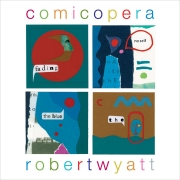 Judged solely by his recordings, Wyatt seems a low-key, wry, extraordinarily loyal and honest person. Yet opinions about his work probably cover a range comprising love, surprise that he's still alive, disinterest, and hate. For sure there are conflicting verdicts on his voice. Love it, like it in small doses, or loathe it, Wyatt's hasn't changed a great deal since the late 1960s. It remains a singularly unadorned expression of our flawed humanity.
Judged solely by his recordings, Wyatt seems a low-key, wry, extraordinarily loyal and honest person. Yet opinions about his work probably cover a range comprising love, surprise that he's still alive, disinterest, and hate. For sure there are conflicting verdicts on his voice. Love it, like it in small doses, or loathe it, Wyatt's hasn't changed a great deal since the late 1960s. It remains a singularly unadorned expression of our flawed humanity.
Anyone solidly in the pro-Wyatt camp, as I am, enjoys his raw-beating-heart-on-sleeve approach to love songs. Perhaps Matching Mole's "O Caroline" makes him cringe now, maybe it lets his detractors point to his weakness and self-indulgence, but it still sounds blissful to me. Comicopera has a classic realist love song "Just as You Are," which gives co-writing credit to his partner, Alfreda Benge. The essence of the song revolves around the line "I'm never going to change a thing about you," and contrasts weary resignation with contented acceptance. Dual meaning is a longstanding feature of Wyatt's work, dating back to the punned titles of Soft Machine pieces, and it perfectly matches the cracked, floating uncertainty of his voice. On "Just as You Are", Benge's viewpoint is tenderly sung by Monica Vasconcelos. Just as fine is Anja Garbarek's "Stay Tuned," a bittersweet study of living with another person and becoming part of the furniture. The light but painful track stops just short of pleading.
As the fantastic "Shipbuilding" illustrated, Wyatt is much less direct about politics than love. Agree or disagree with his views, he invariably tackles tough topics with a subtlety that belies the depth of his passion. During "A Beautiful War," assuming the character of a bombing pilot, he convincingly portrays well-meaning patriotism and quasi-evangelical euphoria. Not quite a nuke-straddling Slim Pickins for the 21st Century, but close. Immediately afterwards, "Out of the Blue" gives voice to the horrifying disgust and numb outrage of the bombed. This piece features Wyatt playing the Enotron: the sampled voice of Brian Eno. The final few tracks are sung in a variety of non-English tongues, to express his contempt for what he terms "the Anglo-American war." Consequently, ending the record with "Hasta Siempre Comandante" comes off as a subtle way to hint at the inconsistencies of US foreign policy, rather than as a salute to the iconic Che Guevera.
All this heartfelt expression needs contrast and it's supplied by several clever instrumentals. One of these, "On the Town Square," is a groovy guitar, cornet, saxophone and steel pan call and response number; a swinging meld of modern jazz and early calypso. The title of the piece, and its jolly feel, suggest ignorance of the reality of the private lives of others and of the nature of war. Brian Eno, Phil Manzanera, Paul Weller, Yaron Stavi, David Sinclair and Annie Whitehead are amongst the cast of characters helping out on the album. Perhaps in deference to Wyatt's notorious socialism no one hogs the limelight. Despite being divided into three sections, Comicopera has a consistent feel and Eno even manages to avoid the kind of production that made the title track from Shleep stick out like a sore thumb. Robert Wyatt has revealed his struggles with incontinence and depression. Thankfully, he remains a creative force. And he's not done yet.
Read More
- Administrator
- Albums and Singles
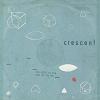 It has been over ten years since their first album and, granted there has been a big shift in the personnel on board, the group are barely recognizable in terms of sound and volume. This fifth album is their quietest, with all muted moods and introspective songs. It is a solid release by the band and, although sharing on paper many traits with the folk revival/fad of recent years, sounds like its own little world. The songs here are calm and tender; the album has a soothing effect on me from the moment it starts.
It has been over ten years since their first album and, granted there has been a big shift in the personnel on board, the group are barely recognizable in terms of sound and volume. This fifth album is their quietest, with all muted moods and introspective songs. It is a solid release by the band and, although sharing on paper many traits with the folk revival/fad of recent years, sounds like its own little world. The songs here are calm and tender; the album has a soothing effect on me from the moment it starts.
The sedate pace of Little Waves make for a relaxing listen; the ten songs are not quite lazy but certainly calm and unhurried. Gentle acoustic guitar forms the basis for the musicians to add the occasional detail such as trumpets and the odd electric guitar line. There is a strong sense of the members of Crescent giving each other space such as on "Nearly Ready," where the brass wind instruments are introduced but only for short intervals, making them fit in naturally with the simple arrangement. One of the best songs on the album is "Come into the Shade," which is based around a gorgeous and slightly off-kilter melody and snatches of audio recordings of people talking. The song has a grainy texture, sounding like it was unearthed rather than recorded by the band.
The croaky vocals on "Our River" come as a surprise after Matt Jones' wonderfully hushed singing on the rest of the album. Jones has a voice hewn from granite most of the time but here his voice is a particularly crumbly piece of stone, the cracks adding buckets of character to this song. As a final track it closes off the album perfectly, his tired and broken voice can go on no more. On this song, and indeed throughout the album, his lyrics are proficiently written yet completely natural and uncomplicated sounding. Jones comes across as being comfortable with his words; he does not seem to feel the need to add dramatic inflections to get the point across. Much like the music, the lyrics are straight to the point and given their own space.
It would be unfair to compare Little Waves to Crescent's earlier output as they may as well be a completely different band in terms of sound. This is as good as the early albums but in the same way that a nice cup of tea is as good as a sandwich. Most people will like both but there will be the odd person who will not like this particular cup of tea. However, all food talk aside, what is most impressive about this album is the fact that far from sticking in a rut, Crescent continue to try new things and most importantly do these new things well.
samples:
Read More
- Administrator
- Albums and Singles
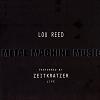 Lou Reed's original release of Metal Machine Music had gathered an awful lot of mythology by the time I got around to hearing it. However, my tolerance for noise already well developed thanks to more modern noise artists, the impact this album had on me was negligible. I appreciated the power of the statement but the actual musical content was underwhelming. Since my first encounter with it, I have grown to enjoy it more, no longer looking for a sensory overload or volume one-upmanship. Instead I accept it as a harsh sonic soundscape, something to pick apart rather than endure. As such, when I initially read about Zeitkratzer's arrangement of Metal Machine Music, my interest was piqued to say the least, how would "ordinary" musicians play Reed's noise?
Lou Reed's original release of Metal Machine Music had gathered an awful lot of mythology by the time I got around to hearing it. However, my tolerance for noise already well developed thanks to more modern noise artists, the impact this album had on me was negligible. I appreciated the power of the statement but the actual musical content was underwhelming. Since my first encounter with it, I have grown to enjoy it more, no longer looking for a sensory overload or volume one-upmanship. Instead I accept it as a harsh sonic soundscape, something to pick apart rather than endure. As such, when I initially read about Zeitkratzer's arrangement of Metal Machine Music, my interest was piqued to say the least, how would "ordinary" musicians play Reed's noise?
Quite well is the answer. Although I can see that it is only conventional instruments, the noise conjured up is unreal. Obviously Zeitkratzer never sound as metal or machine-like as Reed's original but they still pack as much of a punch as that feedback-ridden LP. The end result of Ulrich Krieger's score is a hybrid between an orchestra tuning up and a steamroller running over an instrument shop. It does sound like Metal Machine Music but due to the organic nature of the instruments, it sounds richer and more vivid. It is alive rather than a machine. Ironically, the weakest part of the performance comes from Reed himself. Towards the end he comes out and plays the guitar on his own, completely disrupting the vibes that Zeitkratzer have built up. If he had only joined them without them stopping it would have been immense but the jarring change from the full orchestra to a guitar being ran through some rather crummy sounding digital effects really takes away from the power of the piece.
I must admit that I find the DVD a bit superfluous, it is nice to watch once but it is never going to be a regular feature on the telly here. On the small screen, the sight of a bunch of men sawing madly at violins and cellos or blowing into saxophones until the veins on their heads pop out gets tedious before the first movement ends. Also add the fact that some of the camera angles are made from some very poor quality video, looking like they were shot on a webcam, not making for a particularly thrilling watching experience. The interview with Lou Reed is at least interesting but again it is something that is worth watching once; it's not going to be on regular rotation. The sounds suit the abstraction of a purely audio release and thankfully there is a CD included with the full performance so I can safely file away the DVD for a time when I can be bothered watching it.
Taken as a whole Zeitkratzer's Metal Machine Music is a testament to the patience of the group (both in transcribing the music and in playing such an arduous piece). It is definitely a more musically enjoyable experience than Reed's Metal Machine Music, the range of sounds seems to be larger and there is a lot more texture to the noise. I imagine being there in the room with this playing is an intoxicating experience, as much as I did not enjoy watching the footage, seeing the musicians in the flesh would be an entirely different story.
samples:
- Metal Machine Music (first movement)
- Metal Machine Music (second movement)
- Metal Machine Music (third movement)
Read More
- Administrator
- Albums and Singles
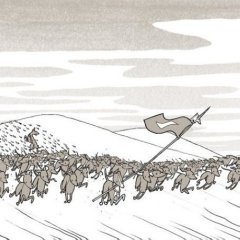 After seven years of active absence, these unsung noise rockers take another stab at the bloated whale called the music business. As usual, this trio of studio gurus spits fire and exerts brute force that leaves weaker musicians and more than a few unsuspecting listeners irrevocably harmed with their latest salvo.
After seven years of active absence, these unsung noise rockers take another stab at the bloated whale called the music business. As usual, this trio of studio gurus spits fire and exerts brute force that leaves weaker musicians and more than a few unsuspecting listeners irrevocably harmed with their latest salvo.
As with legendary producer Steve Albini's prior bands, Shellac has never been about the fans but rather in spite of them. The industry-hardened trio of Albini, bassist Bob Weston, and drummer Todd Trainer make angular, furious music with a merciless, confrontational edge. With its members spending much of their time assisting other bands in making their albums, Shellac serves as their own infrequent outlet beyond now-impenetrable rock-and-roll resume building. Their debut, 1994's requisite At Action Park, was a monumental headfuck that sodomized, waterboarded, and indoctrinated to the point where it became impossible not to have an opinion about Shellac. The albums that followed each have their respective merits, and Excellent Italian Greyhound is no exception.
Opener "The End of Radio," an onslaught of calculated menace that mockingly celebrates the death of the commercial airwaves, finds a pathologically steady bassline, militant snare-dependent rhythms, and incoherent guitar howl skulking behind Albini's vitriol. His bloodlust for the inherently corrupt and despicable music industry has appeared many times before, most poignantly in a must-read essay titled "The Problem with Music." But this eight-and-a-half minute venomous eulogy reminds just why Shellac retains such an eager fan base; all parties share a common disdain. As always, Albini's biting humor often informs these mostly raucous proceedings, as evidenced on the hilarious and boastful "Be Prepared." Brief and primitive post-punk rockers like the quasi-motivational "Boycott" and the jarring yet evocative "Spoke" are balanced by longer songs where the band exercises an acute sense of restraint. Like a song in pieces, "Genuine Lulabelle" nearly doesn't attempt to reassemble itself, resulting in sparse guitar plucks and strums interrupted and infiltrated by fleeting fractious bursts of rhythm and even tuneless acapella vocals from a subdued Albini, spoken word poet Ken Nordine, and Internet celebrity Strongbad. By its final two minutes, the band seems to have found the plot long enough to deliver an oblique though comparatively competent end.
While multi-millionaires like Trent Reznor, Madonna, and the blokes from the increasingly pedestrian Radiohead can afford to snub their noses at the industry, these guys were doing it long before anyone heard one chord of Pablo Honey. Although Excellent Italian Greyhound wont turn Shellac into MTV darlings, that has always been the furthest thing from these guys' minds. By making music that they want to listen to themselves, they thrive in the notable category of being one of your favorite band's favorite bands—not that it matters. After 13 years, Shellac still doesn't give a shit.
samples:
Read More
- Administrator
- Albums and Singles
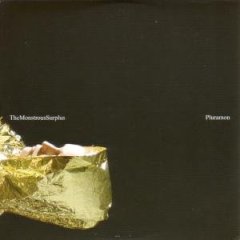 The fifth full-length release by Marcus Schmickler as Pluramon uses three vocalists, including Julee Cruise. This simple device allows for multiple angles of perception to be explored in different narrative voices. Allied to spellbinding production, this is a fascinating record.
The fifth full-length release by Marcus Schmickler as Pluramon uses three vocalists, including Julee Cruise. This simple device allows for multiple angles of perception to be explored in different narrative voices. Allied to spellbinding production, this is a fascinating record.With Julee Cruise on vocals, the euphoric "Turn In" has a lush headiness that flies dangerously close to Fleetwood Mac 2.0. She is singing words, some of which might be harsh or rude, but the gentle swirling mix is so hypnotic that no one in their right mind would be concerned what they are. It is the shockingly blissful equivalent of cracking an egg into a pan and gazing down upon a warbling embryonic Stevie Nicks.
"Border" is a sonic cocoon, wrapped with layers of synth, percussion, and guitar similar to Mono at their most tantalizing. It features vocals by German actress Julia Hummer, though it is Schmickler himself who sings the nauseating opening lines: "This is it/This is Life/It's all right/Cos I'm in love with you/ OK/ There's beauty in breakdown". Again, the music is unflinchingly suffocating and dreamlike. Such an overwhelmingly sweet sound can only be tolerated because here and there the lyrics hint at bitterness, darkness, traps, deceit, and heartache. Schmickler has a lot of experience with beats, improvisation and choral music and he avoids making a piece of music too long, too dense, or too cloying. Consequently, The Monstrous Surplus is a wondrous balance between the enigmatic and the palatable.
The use of two similar but disparate singers reminds me of the late Bunuel film That Obscure Object of Desire where the lead role is played by two different actresses. Cruise and Hummer both have four tracks, but even with sleeve notes, discerning who sings which is not necessary to enjoy the album. This trick perhaps questions the notion of romantic love, wherein there is but one perfect match for each of us. Either that, or it might allude to the untrustworthiness of human desire in the sped-up flicker-book world of urban sprawl, wherein anyone can "fall in love" with complete strangers twice a week.
"Fishing" strongly echoes "Border" and Schmickler sings, "I was faking this shit." There may well be deceit in the recorded narrative but the phrase is also a reminder that the creative arts link the equally (un)reliable worlds of imagination and reality. A third female voice, the writer Jutta Koether, appears on "Fresh Aufhebung" and the pretty, fuzz-laden final piece, "So?" Her alluring speaking voice, reminiscent of the oddly commanding tones associated with Tarwater, adds a contrasting feeling of uneasiness to the album. At the end of "So?" she says "Beauty is a mess," but that statement is contradicted by almost all the compositions on this mysterious record. Many listens are required to unpick the puzzles buried beneath the cleverly constructed sheen of The Monstrous Surplus. It appears to tread lightly but leaves an enormous impression. Quite how the bizarre cover version of Sham 69's "If The Kids Are United" (sung by Hummer) fits in, though, I couldn't possibly say.
samples:
Read More
- Administrator
- Albums and Singles
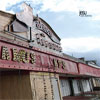 With a quick, cursory listen to this disc, it is not hard to see why these tracks didn't make it onto any other Jesu release. Not due to a lack of quality or anything like that, they just would not have clearly stuck out as too "different" among the others that have been released. With that in mind, we are presented eight tracks that are among the most experimental Justin Broadrick has released, but like almost everything else he has a hand in, are pure gold.
With a quick, cursory listen to this disc, it is not hard to see why these tracks didn't make it onto any other Jesu release. Not due to a lack of quality or anything like that, they just would not have clearly stuck out as too "different" among the others that have been released. With that in mind, we are presented eight tracks that are among the most experimental Justin Broadrick has released, but like almost everything else he has a hand in, are pure gold.
 
Among the four vocal tracks (the remaining for are instrumentals), one of the most notable differences is in the drum tracks.Where most of Jesu's body of work has stuck to rudimentary rock rhythms, the tracks here are more apt to drift into electronica and IDM rhythms rather than conventional sounds."Can I Go Now" has a beat that wouldn't be out of place in a club, if it were not matched with the melody of a decaying music box and some bass heavy riffing.It's akin to some of Jesu's gentler work with a less distortion based take on Techno Animal.Interestingly, Broadrick gives some of his most melodic vocals to date around this track, even if they are heavily effected and processed."The Playgrounds are Empty" is perhaps the most conventional of the tracks, other than the skittering electronic rhythms and odd vocal filtering, it is all bass heavy riffs and more gentle treated guitar notes.As a whole, the vocal tracks are more electronic in nature, sort of like the Jesu portion of the Eluvium split that came out earlier this year, but are more compelling.
The instrumentals are a bit more in line with the conventional Jesu tracks that have been on the multitude of albums and EPs, with a greater emphasis on the guitar riffs and rock rhythms, just a greater amount of electronic tweaking and effects, like the cut up vocal loop of "Don't Dream It," which is lots of heavy riffs yet fragmented and mixed with a twinkling piano melody."Tiny Universes" is among the most idiosyncratic, with a rhythm that could have been lifted from the forgotten Sidewinder project of Broadrick with soft ambient synths.The instrumentals do have that "sketches" feeling about them, that they are experiments that just were not fully fleshed out, but even in this stripped down context are still fascinating.
There is the definite potential for Pale Sketches to be the "lost" Jesu work of this year.Considering the level of productivity this year (Conqueror, Sun Down/Sun Rise, the Eluvium split, and Lifeline), this one hasn't received a massive amount of attention.Perhaps it is due the fact it is a limited edition of 2000 being sold directly by Broadrick (by the way, this is a totally solo endeavor, from all of the tracks to the graphic design), but I figure that's probably intentional.This record screams "for the fans": those of us who have been around since the Heart Ache EP, and most of us back far into Godflesh's heyday.So for the fans, here's a chance to hear some experimentation that never feels self-indulgent or wasted.
samples:
Read More
- Administrator
- Albums and Singles
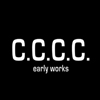 Though only active for a relatively short period, this band became one of the genre definers of what is now the burgeoning noise scene. This deluxe four CD boxed set represents some of the earliest live recordings from the (mostly) four piece band and shows that, regardless of what is perceived as "noise" as it relates to music, they have a compelling body of work.
Though only active for a relatively short period, this band became one of the genre definers of what is now the burgeoning noise scene. This deluxe four CD boxed set represents some of the earliest live recordings from the (mostly) four piece band and shows that, regardless of what is perceived as "noise" as it relates to music, they have a compelling body of work.
Cosmic Coincidence Control Center were active during what I personally term the "golden age of noise," from the late 1980s into the mid 1990s. Japan was then a hotbed for this stuff—Merzbow, Masonna, Government Alpha, Pain Jerk, etc.—and one of the things that set C.C.C.C. apart was the fact they were an actual BAND. All of the aforementioned, and most of the other ones not listed (with the exception of Hijokaidan) were single artist projects. Here there four members, each playing a different instrument, to create their own unique sound. Hiroshi Hasegawa (now of Astro and Astral Traveling Unity) and Fumio Kosakai (of the Incapacitants) on electronics and synths, Ryuichi Nagakubo on bass, and Japanese bondage film star Mayuko Hino on vocals and metal percussion working together make for a diverse project that goes a ways beyond the standard "electronic roar" that most noise artists rely on.
Spread across the four discs of this set are mostly live recordings at various locations that haven't been released otherwise in any other form. The earliest recordings, one of which being a duo of Hasegawa and Hino, prove to naysayers that noise isn't just a matter of full on sound: there are obvious moments of tension building noise walls met with more expansive bits of ambience, all punctuated with rhythmic junk percussion. There are closer parallels to some of the earlier industrial innovators like SPK and Test Dept. with the use of improvised metal rhythms over a synthetic din.
C.C.C.C. was stereotyped as a "psychedelic" noise band early on due to their penchant for flanged and phased noise, and some of those elements are present at this early stage in their career, like the dense flanged synth pulse on "Live at Gospel #3." Other of the performances showcase Hino's shrill screams, like on "Live at Donzoko House #2," and the only studio recording, "Magick in the Cave." The latter, plus the 42+ minute live "Phantasmagoria," the entirety of disc 4, make up the cleanest recordings on the disc, as they were the only ones to have been released previously, unlike the rest of the material.
No Fun Productions has done an excellent job compiling this set, both visually and audially. The four panel digipak is minimally designed, featuring a video still from one of the performances (and yes, Hino is doing her nude/candle wax dripping performance on it, so enjoy), which folds into a nice, heavy stock slipcase. The liner notes, written by former member Fumio Kosakai, are also brilliant, and among the most interesting commentaries on music I have read. Although he reiterates more than once that he is just writing from his own perspective as a former member, his take of the history and development of the band is a fascinating one. And, big names all around, James Plotkin does an excellent job of mastering the admittedly lo-fi recordings. They do sound a bit rough around the edges, but it in no way detracts from the work.
samples:
Read More
- Administrator
- Albums and Singles
 This CD is the third installment in Rapoon's Alien Glyph Morphology series. The material here appeared previously in a 2X10'' LP, but it plays more like an compilation than a album. The songs use similar samples and snyth patches, but their quality varies widely and makes for a frustrating listen.
This CD is the third installment in Rapoon's Alien Glyph Morphology series. The material here appeared previously in a 2X10'' LP, but it plays more like an compilation than a album. The songs use similar samples and snyth patches, but their quality varies widely and makes for a frustrating listen.
The limited edition of this CD packaged in a beautiful chocolate brown triple gatefold sleeve. It's printed in ripple pattern that looks like channels of rainwater in the sand. Robin Storey, the man behind Rapoon and member of Reformed Faction, is as much a painter and printmaker as he is a musician. His designs are organic but not crude, mimicking the primitive yet futuristic landscape of the desert Southwest. In Colorado, where I grew up, alien mythology, Indian ruins, and Space Age nostalgia was, and still is, an important part the culture. Holding the sleeve and reading the titles brought back a lot memories of growing up there.
As for the music itself, I was less impressed. The synthesized instruments often sound chintzy, especially the trumpet patch used throughout the album. The clear, pristine sound production compounds this problem. Normally this is a virtue, but here it only highlights the artificial quality of Storey's sound sources. The more enjoyable tracks, like "Stealth Coming," have thick curtain of reverb pulled over them, creating the mysterious atmosphere I was expecting.
I had some reservations on speaking negatively about this release. I love the concept and packaging, but the music failed to elicit much a reaction at all. That said, it's hard to find serious fault, because I could just listen to the dozens of other releases and side projects Storey has put out before. And given how productive he is, I don't think it will take long for him to put out something more appealing.
samples:
Read More
- Administrator
- Albums and Singles
 Comparisons to Shellac and the pudgy but sludgy Melvins are legitimate, though this insolently self-proclaimed "two-piece punk band" has produced a compelling and anarchistic debut LP. While their riotous sounds suggest roots deep within the Touch and Go back catalog, The Austerity Program extracts every drop of blood from heavy metal's engorged gallstone.
Comparisons to Shellac and the pudgy but sludgy Melvins are legitimate, though this insolently self-proclaimed "two-piece punk band" has produced a compelling and anarchistic debut LP. While their riotous sounds suggest roots deep within the Touch and Go back catalog, The Austerity Program extracts every drop of blood from heavy metal's engorged gallstone.
Categorically, Hydra Head Records has had an absolutely marvelous year, with releases from critically acclaimed heavy music acts like Jesu and Pelican as well as rising stars like the first-rate Big Business and the Cave In / Old Man Gloom side-project Zozobra. While all of these blissfully lack homogeneity when compared to each other, The Austerity Program seems almost like a distant cousin, one that the family decided to keep the rest of the kids far away from. Musicians Justin Foley and Thad Calabrese present Black Madonna, their staggeringly transcendent first album, in a disorienting package of DayGlo flora, barely devised track titles, and chart-dependent pseudo-academic pretension. Yet behind this impenetrable exterior lies eight songs of bipolar tension, mammoth basslines, colossal electrified guitar riffs, and splendid programmed percussion.
The turbulently epic "Song 12" initiates this delightfully disruptive record without hesitation, throwing out the proverbial red meat without wasting time on arty introductions. Foley unleashes an exuberant thrash onslaught midway, with Calabrese accenting the measures by battering his taut metal strings. "Song 17B" follows that melee with a slow-building grind that eventually erupts into something so fierce and discordant that Steve Albini himself would proudly spew onto record. Vocally, Foley bears a slight resemblance to that misanthropic nerd, a welcome joy when so much of today's heavy music forces listeners to grudgingly choose between bellyaching emo-tards and equally tormented cookie monsters. On that track, Foley seethes with impassioned and alacritous urgency, threatening the ghastly effects of an unnamed poison. Even so, his bloodthirst is countered by an abstruse wit. At the very end of the robust "Song 18," I think he actually shouts out "Dora the Explorer" after unintelligibly roaring his way through its brusque duration.
The whopping closer, "Song 16," chugs along in meticulous fits and starts, with Foley moaning gruffly over the putrescent, sludgy slog. It begins ramping up to an inevitable yet invigorating climax nearly ten minutes in, with Foley hysterically shouting out his cohorts name in a clichéd rock-and-roll call-and-response before crying out "It's time to let it go". And let loose it does, with Foley's yelp and mutter caught up in vibrant aural violence. From start to finish, Black Madonna never disappoints, somehow balancing on a bloodied razor's edge between arena-ready accessibility and bulletproof abstraction. The Austerity Program makes gripping, ballsy noise rock that overwhelms and enthralls with unparalleled particularity and indisputable talent.
samples:
Read More
- Administrator
- Albums and Singles
 This ferocious triptych from the esteemed duo of Aidan Baker and Leah Buckareff lacks that gauzy, narcotic quality of Jesu's increasingly popular heady metal shoegaze, though it more than compensates by being imperiously steeped in consummately sepulchral aesthetics.
This ferocious triptych from the esteemed duo of Aidan Baker and Leah Buckareff lacks that gauzy, narcotic quality of Jesu's increasingly popular heady metal shoegaze, though it more than compensates by being imperiously steeped in consummately sepulchral aesthetics.
I first experienced Nadja's so-called ambient doom by catching the last five minutes or so of their performance at the Brainwaves festival in 2006, arriving characteristically late as a form of reckless, brash rebellion. Once in the darkened theater, their final act of ebbing and flowing didn't exactly motivate me to seek out their material, but now, a year later, I stumbled back on to this group thanks to recommendations from some especially rabid Sunn O))) fans. What I soon discovered was that Nadja's songs can only be fully absorbed, appreciated, and enjoyed when heard ideally in their respective entireties. (Nonetheless, ironically and in defiance, I am still offering sound samples below.)
Saturated in dark, polluted water, Radiance of Shadows recoils at the permeating glare of the sun above, except when taunting its drowning, panicked listeners with fleeting glimpses of an unattainable surface. Despite each of the three tracks clocking in at roughly less than 30 minutes a piece, the album demands active listening with its systematic flexing of muscles and interspersed lulls. "Now I am become death, destroyer of worlds" is more psychotropic than psychedelic, its massive and consumptive waves of riffage ravaging like some awesome yet terrifying acid trip. Walls of searing toxic sludge metal dovetail with disproportionately effulgent ambience, creating a dissonantly harmonious kind of bloom and gloom effect where sounds are simultaneously overwhelming and overwhelmed. The subsequent "I have tasted the fire inside your mouth" eases off the distortion pedal for long enough to appreciate its marginally strident atmospheres, but soon enough that oppressive grind resurges. As with Justin Broderick's aforementioned project, this track showcases the delicacy of harsh sonics, but discloses the evidence in vociferous abstraction as opposed to Jesu's clear song structure. The title track, which serves as the finale, builds up anxious tension between its buried, softly uttered lyrics and bombastic guitar eruptions, though it pales in comparison to its astounding preceding movements, fizzling out into familiar though somewhat redundant cacophony.
As if Nadja needed help in the credibility department, the venerable James Plotkin handled the mastering of this grotesque, transcendent record. With the destructive power of nuclear energy at its center, Radiance of Shadows attempts to metaphorically harness a sonic equivalent, and, to some extent, succeeds. Fans of Stephen O'Malley's myriad drone projects will certainly find this worth adding to their collections.
samples:
- now I am become death, destroyer of worlds
- i have tasted the fire inside your mouth
- radiance of shadows
Read More
- Administrator
- Albums and Singles
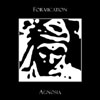 Formication are the Nottingham based duo of Alec Bowman and Kingsley Ravenscroft who have recorded for Lumberton Trading Company (Thighpaulsandra, Experimental Audio Research). My previous experience of their music tells me the ideal way to submerge myself in their latest mini-album is through headphones, by candle light with an ice cold Guinness in hand.
Formication are the Nottingham based duo of Alec Bowman and Kingsley Ravenscroft who have recorded for Lumberton Trading Company (Thighpaulsandra, Experimental Audio Research). My previous experience of their music tells me the ideal way to submerge myself in their latest mini-album is through headphones, by candle light with an ice cold Guinness in hand.
The album's intro begins with some sinister electronic percussion while dark atmospheric synths create an unsettling feeling. Distant voices that sound like they're speaking in tongues suggest a nightmarish paranoia. The second track has a wailing sound that resonates through the off kilter percussion while layers of crackles permeate the sound of broken machines, like the technology is dying, taking its final breath as it malfunctions. The third track has a warm, lush beauty: minimal melodic keys and chimes sound familiar and comforting, like coming out of a bad trip with a sense of hope. It is simple in its execution yet astounding in its beauty. It is indeed "deep listening" as lots of subtle intricate pulses in the background can be tuned in to, and it is no longer the nightmare suggested by the album's opener.
As the comfort of reality sets in following the end of the nightmare, a restful sleep follows, but the relief is temporary. The sound of artificial crackles and fizzes are disorientating upon re-entry into that dark place, the most distant recesses of the subconscious. Meanwhile, the insect wings fluttering at hundreds of miles an hour puncture the brooding sub bass that weaves in and out of bubbling liquids, deeply rich textures, bleak soundscapes and synthetic audio sculptures. All the while a sense of melancholy permeates. It's a new world but it seems familiar. A million shades of black can be seen and each one is more intriguing than the last.
Agnosia closes with a cinematic, haunting piece that evolves into a hybrid techno track with eerie vocals and a futuristic vibe full of lurking tension and passionate intensity. It eventually becomes totally claustraphobic but as soon as it all becomes too much and I need to turn the lights on I'm relieved with white light as the album fades away like the ghost of a distant memory.
Agnosia is a set of tracks that are interesting on every level from their glacial surface through to each subtle detail in the production. At a running time of just over 32 minutes it doesn't overstay its welcome and therefore is ideal for some late night solo escapism during the impending winter.
Although the music is electronic in its construction it retains an organic, human feel throughout. Here are a duo who have truly mastered the art of black electronics: imagine Darth Vader and Aleister Crowley on powerbooks after completing a PhD in sound design. It is genuinely original sounding material that fans of Coil, Rapoon, Deathprod, and recent Dopplereffekt should investigate.
streaming sounds available at http://www.theformicarium.com/
Read More

